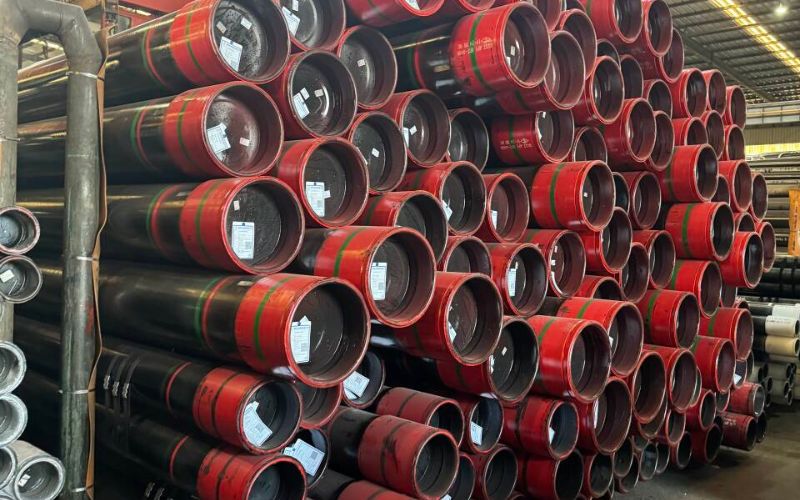Maintaining smooth, black stainless steel surfaces is now a form of challenge. For its sophisticated finish and resistant to fingerprinting properties, black stainless steel has become a popular choice in modern kitchen designs and homes. However, improper cleaning methods can leave its surfaces with ugly streaks, with scratches or coating well and truly damaged. This book provides you with comprehensive, step-by-step cleaning instructions, supported by expert tips, to keep your black stainless steel surfaces always sparkling clean and polished. For stubborn stains or to maintain a perfect appearance, this comprehensive guide provides expert advice on how to do it right and the products that’ll keep that look intact for ages.
Understanding Black Steel and Its Unique Properties
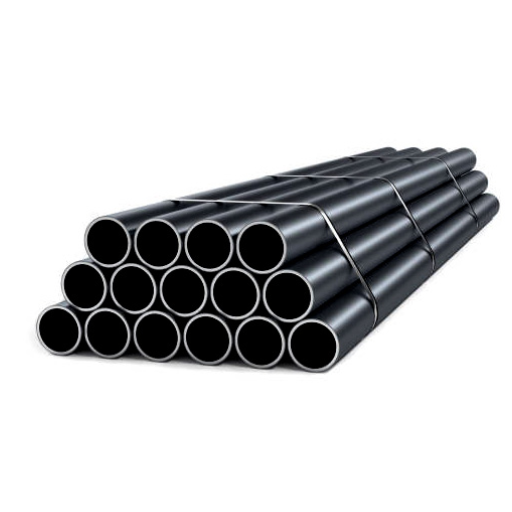
Black stainless steel is a durable and styleful material incorporating traditional stainless steel with a protective coating, the latter usually being tinted or having a baked-on finish. The coating gives the steel a sleek, modern look while making it resistant to fingerprints and smudges-an ideal finish for kitchens and similar work surfaces. However, in this regard, it contrasts with regular stainless steel, as the coating on black stainless steel can be scratched off, revealing the steel beneath. It is essential to take care to maintain the quality of the finish and preserve the unique dent-resistant qualities over a long period.
What is Black Steel?
Black steel, while often confused with black stainless steel, is an alternative material used primarily in construction and manufacturing. This black steel can be obtained when the steel is heated at very high temperatures and then cooled without a galvanizing coat. According to this description, it has a dark, matte finish that, in appearance, is somewhat rustic and industrial. Black steel is widely recognized for its strength and durability, making it an ideal choice for pipes, fittings, and structural work. This is in contrast to black stainless steel, which lacks a protective, corrosion-resistant layer and therefore requires the application of some treatment, such as painting or sealing, to prevent rust. One of the most appreciated features of it is its versatility in heavy-duty applications and stiff advantage in today’s architectural designs.
Differences Between Black Steel and Stainless Steel
Black steel differs from stainless steel primarily in terms of composition, corrosion resistance, finish, applications, maintenance, and cost.
Note: Each material has distinct advantages depending on the intended use, making the choice context-dependent.
Common Uses of Black Steel in Cookware
- Woks are used with very high heat for stir-frying and sautéing because black steel is an excellent conductor of heat.
- Griddle plates work fine with large cooking surfaces, evenly distributing heat.
- Baking pans are best for browning and crisping with black steel.
- Pizza pans make for a perfect crust due to excellent heat retention.
- Frying pans are meant for searing and frying that require more close temperature control.
Step-by-Step Methods for Cleaning Black Steel
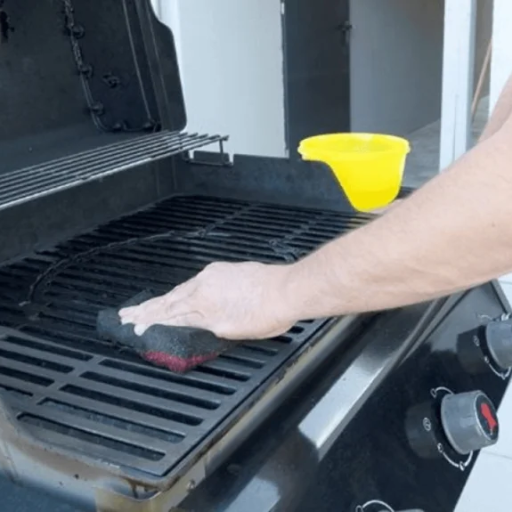
- Cool Down the Cookware: Do not clean black steel cookware when hot because sudden temperature changes could warp its surface.
- Remove Leftover Food Materials: Take a soft sponge or scraper to remove the food material gently. Never use an abrasive material for this purpose as this could damage the surface.
- Wash in Warm Water: Rinse the cookware under warm water and gently loin with some mild soap if necessary. Never make long soaks because rusting can set in when exposed to water for too long.
- Dry Immediately: Dry it with a clean towel to prevent moisture from accumulating, as this can aid in rust formation.
- Re-season if necessary: If the protective coating comes off, apply a thin layer of oil and reheat to retain its seasoning and prevent corrosion.
- Store Properly: Store the cookware in a dry, well-ventilated place. Avoid stacking directly on top of the rest of the cookware to maintain the surface finish.
Pro Tip: This methodical approach will make the black steel cookware more rigid, more functional, and resistant to wear over time.
Essential Tools and Materials for Cleaning
Based on my studies and observations, the basic tools and materials for cleaning black steel cookware include a stiff-bristled brush or a non-abrasive scrub cloth, warm water, and mild soap, only when necessary. Additionally, a lint-free towel or microfiber waffle cloth is required to dry the surface thoroughly, preventing moisture-induced rusting. As a final note, high smoke-point oils, such as flaxseed or grapeseed oil, should be used for reconditioning cookware to maintain durability and performance.
How to Clean Black Steel Pans
When cleaning black steel pans, I never use harsh detergents or abrasive cleaning devices, as this can destroy the seasoning. Instead, I rinse the pan with warm water immediately after use, and use a stiff-bristled brush to remove any stuck-on food. If stubborn residue remains, I add a little water to the pan and bring it to a simmer to loosen the debris, then gently scrub it. Afterward, I dry the pan thoroughly with a lint-free towel to prohibit rust formation. Finally, I rub a thin coat of high-smoke point oil like flaxseed oil on it then heat it for a short time to ensure it remains well-seasoned, non-stick, and rust-resistant.
Using Baking Soda and Lemon for Stubborn Stains
For stubborn stains, make a paste of baking soda and freshly squeezed lemon juice. Rub it directly on the stained area and let it sit for a few minutes to dissolve the hard residues. Using a gentle abrasive scrub pad, rub in circles to gently lift the stain without harming the surface. Rinse the pan with warm water and ensure it is completely dry after cleaning. This cleaning combination is potent because baking soda gives an abrasive effect affectionately known as mild cleaning power, along with the lemon juice’s acidity that assists in knocking down stains and restoring the pan to clean condition.
Preventing Damage While Cleaning Black Steel
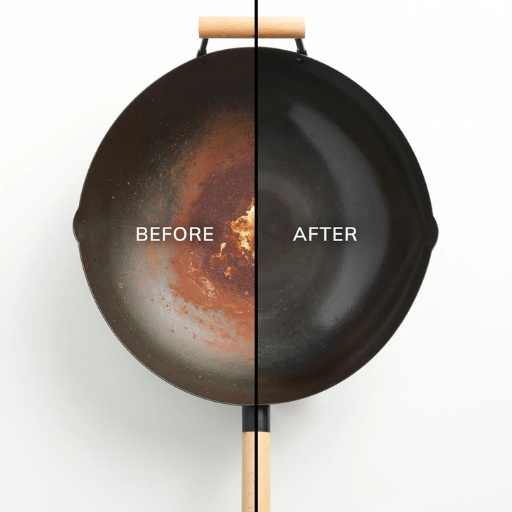
The cleaner should not be abrasive or strongly acidic, as these cleaners strip the protective coatings and actually set the black steel up for corrosion. Use simple cleaning solutions such as clear dish soap and warm water, and apply it with a soft cloth. Dry the surface thoroughly, keeping in mind that water can act as a catalyst and accelerate oxidation. Occasionally, you may also want to apply a thin coat of oil to the surface to help maintain the steel’s protective coating and extend its lifespan.
Why You Shouldn’t Use Steel Wool on Black Steel
Warning: Steel wool should never be used on black steel, as it is rough enough to damage the surface finish and remove protective coatings. Steel wool typically creates tiny scratches that compromise the corrosion resistance of steel, rendering it more susceptible to rust and oxidation. Pieces of steel wool can break off and adhere to the steel surface, introducing foreign particles that simultaneously accelerate rust formation. Hence, using non-abrasive cleaning pads or microfiber cloths with a mild cleaning agent will help maintain the look and integrity of black steel.
Choosing the Right Cleaners for Black Stainless Steel
For me, when it comes to cleaning black stainless steel, I always choose a cleaner that is specifically designed for it and won’t harm or discolor the surface. In all everyday situations, something as simple as diluting dish soap in warm water will do the trick, applied with a soft microfiber cloth to prevent scratching. For cleaning that requires a bit more effort, I opt for products that are completely free of harsh chemicals like bleach and ammonia, as these can break down the finish. I also make it a point to dry the surface well after cleaning to prevent any messy water spots or streaks. It’s all about keeping things gentle, so the product still has its protective layer intact and maintains its nice appearance. If you do that, it’ll last you for life and look good all the way through.
Maintenance Tips for Long-lasting Black Steel Cookware
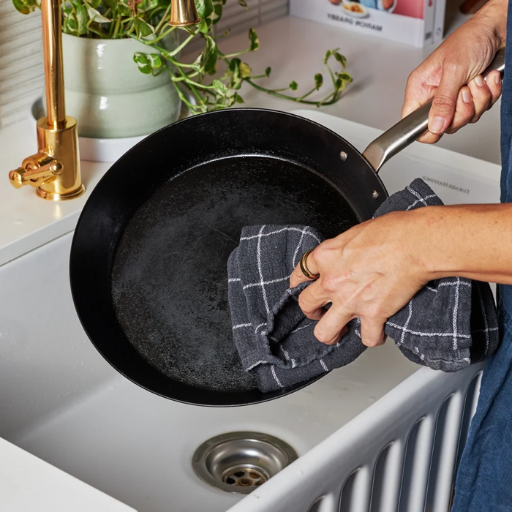
To ensure the durability and performance of black steel cookware, it is essential to follow precise maintenance practices. Before first use, season the cookware by applying a thin layer of high-smoke-point oil and heating it to create a protective, non-stick coating. After cooking, cleaning with warm water and a soft sponge is advised; using abrasive pads or harsh detergents to scrub the surface will weaken the seasoning. Always dry the cookware thoroughly to prevent rusting; afterward, store it with a light coating of oil to maintain its temper. Proper care will prolong the lifespan of black steel cookware while enhancing its cooking capabilities over time.
How Often Should You Clean Black Steel?
Black steel cookware must be cleaned after every use to maintain its seasoning and avoid the accumulation of food residue. The routine entails scraping off any excess food, rinsing with warm water, and gently scrubbing it with a sponge to retain the seasoning layer. Do not be overly aggressive when washing, as this can wear off the protective coating. By cleaning after every use, you ensure that the cookware remains in excellent working condition for a longer time.
Protecting Your Black Steel from Wear and Tear
Keep your black steel safe from wear and tear by practicing maintenance. Do not allow it to be soaked in water for an extended period or exposed to moisture, as this will cause it to rust. Subsequently, oil it lightly, depending on the coating present, after thoroughly drying it with soft cloths. Use utensils made of wood, silicon, or plastic while cooking to prevent scratching of the surface rather than metal ones. Avoid using very high heat for long as it will cause damage to the seasoning. Store them in a dry place, preferably not stacking any heavy objects directly on top of them, to prevent physical damage. With regular care and operational consciousness, the performance and utility of your black steel pans can be maintained for a much longer period.
Polishing and Maintaining the Finish of Black Iron
Proper maintenance of black iron requires consistent effort to preserve its finish and functionality. To polish black iron, begin by lightly cleaning the surface with a soft cloth or sponge dampened with warm water and a small amount of mild dish soap. Avoid using harsh chemicals or abrasive materials, as these can strip the protective layer and cause damage. If rust spots appear, gently remove them using fine steel wool or a non-abrasive scouring pad, followed by a thorough rinsing and drying.
Re-seasoning is critical to maintaining the finish and creating a non-stick surface. Apply a thin, even coat of high-smoke-point oil—such as flaxseed or grapeseed oil—across the entire surface, then heat the item to bond the oil with the metal, effectively restoring the protective layer. When storing black iron, ensure it remains in a low-humidity environment and periodically inspect for any signs of oxidation or wear. By following these detailed steps, you can maintain the aesthetic appeal and functional longevity of your black iron cookware.
Common Cleaning Mistakes to Avoid
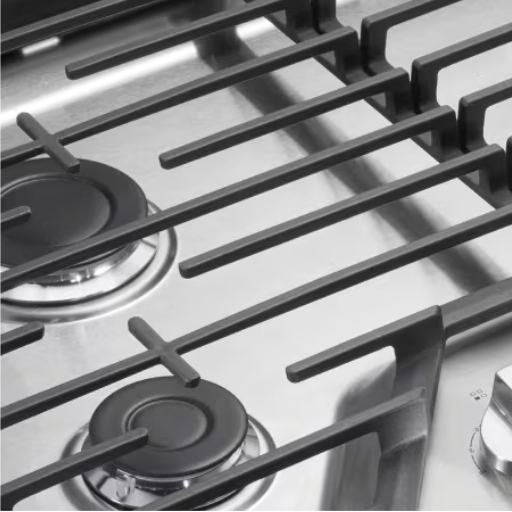
- Using Abrasive Cleaning Agents: Any coarse cleaning agent will strip away the protective layering, leaving the surface vulnerable to rust. Use a soft sponge, along with a non-abrasive cleaning agent.
- Allowing Surface Prolonged Wetness: Keeping black steel items wet or soaking them encourages oxidation. Always dry immediately after cleaning.
- Not Seasoning After Cleaning: Forgoing oil application after washing reduces the non-stick property and increases the likelihood of rust.
- Dishwasher Usage: Dishwashers can damage the seasoning due to their high heat and detergent formulation, and hasten corrosion; proper upkeep requires hand washing.
- Neglecting Regular Maintenance: Failing to inspect and season steel periodically may ultimately impact its lifespan and performance.
Harsh Chemicals and Their Effects
Cleaning black steel with harsh chemicals can drastically impair the functionality and longevity of the product. Strongly abrasive chemicals, such as oven cleaner or bleach, or highly acidic solutions, can wash away the protective layer of seasoning, leaving the raw steel vulnerable to moisture and leading to rapid corrosion and rusting. Besides, these chemicals may deposit residues that could pose a food safety challenge if the black steel is used in food applications. If black steel is repeatedly exposed to such chemicals, scrupulous engineering may, in the longer term, be compromised by pitting or surface damage. Therefore, the safe cleaning of black steel requires the use of mild detergents with warm water and non-abrasive scrubbers to protect the non-stick properties and durability of the product. In addition to regular cleaning, reseasoning will help keep black steel at optimum performance and prevent any damage from harsh chemicals.
Abrasive Sponges and Scrubbing Techniques
Black steel cookware should be cleaned without using abrasives or any other harsh scrubbing methods that could scrape off its seasoning or otherwise damage the cookware’s surface. Abrasive scrubbing materials, such as steel wool or heavy scourers, should be used only very occasionally and rejected where other means of removal are possible. The preferred cleansers are non-abrasive scrubbing pads, used in combination with warm water and a mild detergent. Rinse the washers well after scrubbing and dry immediately so that it does not rust. After using abrasives, always apply a fresh seasoning on the steel to maintain its ability to protect itself and perform well over time.
Ignoring Manufacturer Guidelines
Failing to follow manufacturer guidelines during the cleaning of black steel can result in reduced effectiveness, corrosive damage, and diminished non-stick properties. Manufacturers typically provide instructions specific to the material, outlining the correct cleaning agents, tools, and techniques. Departing from these instructions, using harsh chemicals, metal scouring pads, or soaking the steel in water for extended periods will strip the protective coating from the material, encourage rust formation, and reduce the lifespan of the cookware. To safeguard its condition and durability over time, these instructions must be followed.
Reference Sources
- Cleaning Black Stainless Steel – Range (Whirlpool) – Provides detailed instructions on cleaning black stainless steel surfaces using warm water, mild soap, and a microfiber cloth.
- How to Clean Black Stainless Steel (Rustic Kitchen and Bath) – Recommends using warm soapy water with a mild dish soap and a soft cloth for effective cleaning.
- A Brief Guide for Cleaning Black Stainless Steel Appliances (Universal Appliance and Kitchen Center) – Offers simple and effective cleaning methods for black stainless steel appliances.
- Tips on De-greasing Black Steel Pipe (Reddit DIY) – Shares community tips for cleaning black steel pipes, including using specific cleaning sprays.
- Top Black Steel Pipe Supplier In China
Frequently Asked Questions (FAQs)
What is the best way to clean black steel cookware?
The best way to clean black steel cookware is to wipe it with a damp cloth or clean rag, removing all residues. Do not use stainless steel cleaners, as they remove the seasoning from the pan. Wash with warm water, very mild soap, and dry after cleaning to prevent rusting.
How do you get grease on black steel surfaces?
Use warm water with a few drops of soap to clean grease off black steel surfaces. Try to wipe the surface with a clean cloth or paper towel, especially in areas where grease seeps through crevices. For harsher greases, mineral spirits are good, but test in a small inconspicuous area first.
Is steel wool the right thing to use for cleaning black steel?
Steel wool is known to scratch black steel and strip away the seasoning, so its use is discouraged. Instead, select a fine scrub pad or soft cloth to avoid damaging the black finish while well cleaning the cookware itself.
How do you clean black pipe without damaging the finish?
Cleaning a black pipe starts with wiping it with a damp cloth to loosen and remove dust and grime. In more challenging situations, a few kicks from the warm water and mild detergent combined with a soft rag might be what is needed. Be warned against abrasive cleaners that can scratch the finish.
How do you maintain the shine of black steel?
The best way to keep black steel looking new is to wipe it clean with a damp cloth regularly, avoiding any harsh chemicals. Additionally, applying a light coat of oil after cleaning will help protect the surface from rust, thereby maintaining the black color.



